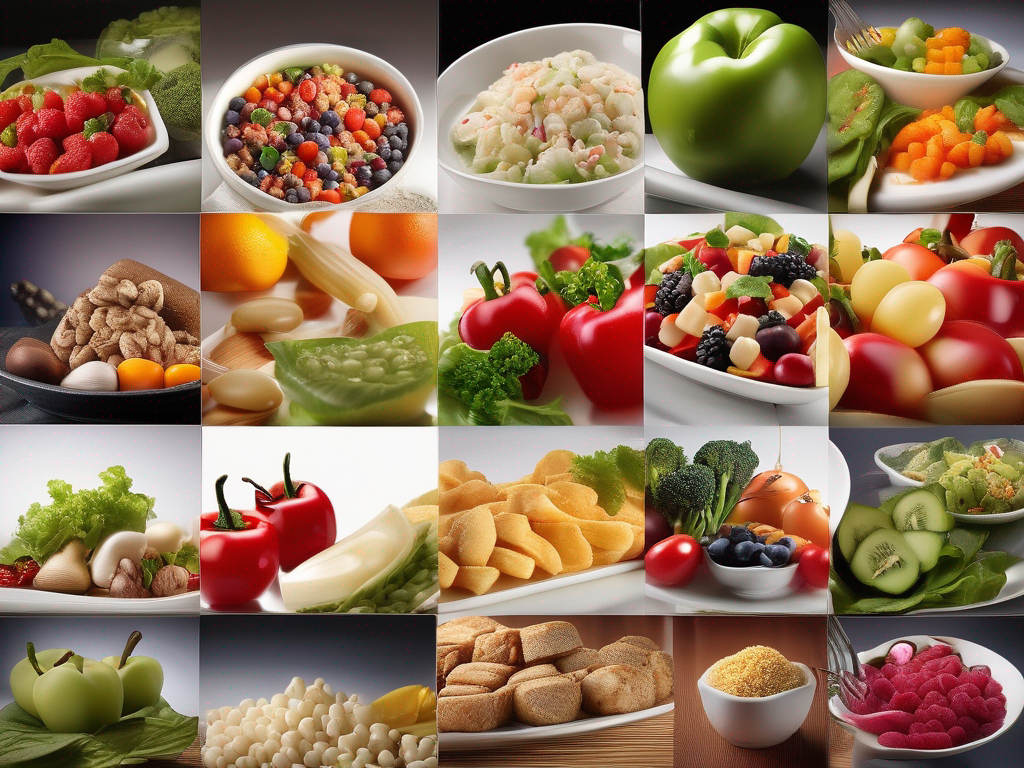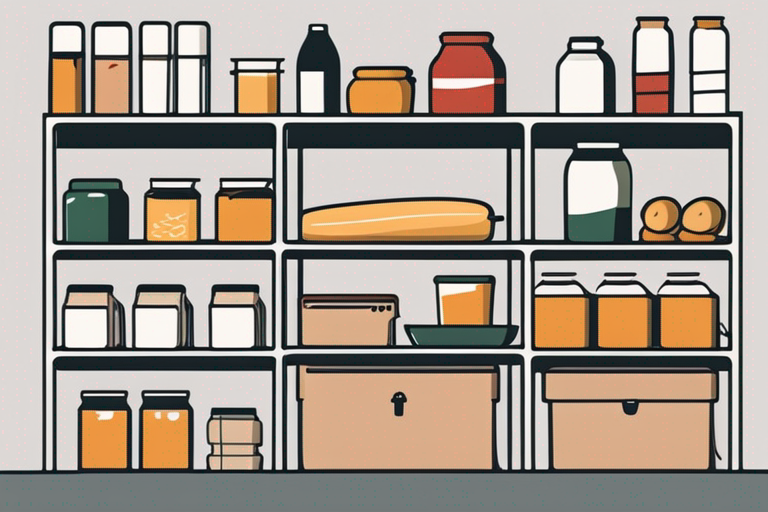
The Ultimate Guide to Food Box: Storage, Safety, and Tips
Get Your Free Food Safety Cheat Sheet
30 most common foods with instant answers. Print it and stick it on your fridge—completely free!
The Ultimate Guide to Food Box: Storage, Safety, and Tips
In today's fast-paced world, food boxes have become a popular way to conveniently store and transport food. Whether you are meal prepping for the week or packing a lunch for work, food boxes can help keep your food fresh and organized. However, to ensure the safety and quality of your food, it is essential to follow proper storage guidelines and food safety practices.
Benefits of Using Food Boxes
Food boxes offer several advantages that make them a practical choice for storing food:
- Portability: Food boxes are lightweight and easy to carry, making them ideal for on-the-go meals.
- Reusable: Many food boxes are reusable, reducing waste and promoting sustainability.
- Organization: Food boxes come in various sizes and compartments, allowing you to organize different types of food in one container.
- Cost-effective: Investing in quality food boxes can save you money in the long run by reducing the need for disposable containers.
Choosing the Right Food Box
When selecting a food box for storage, consider the following factors:
Material
- Plastic: Durable and lightweight, but make sure it is BPA-free.
- Glass: Sturdy and microwave-safe, but heavier and more fragile.
- Stainless Steel: Non-toxic and long-lasting, but not microwave-safe.
Size and Compartments
- Choose a size that fits your portion sizes and storage needs.
- Compartments can help keep different foods separate and prevent them from getting soggy.
Sealability
- Opt for food boxes with secure lids to prevent leaks and spills.
- Look for airtight seals to keep food fresh longer.
Food Safety Tips for Using Food Boxes
Ensuring the safety of your food when using food boxes is crucial to prevent foodborne illnesses. Follow these tips to maintain food quality and safety:
Cleaning
- Wash food boxes with hot, soapy water before the first use and after each use.
- Pay attention to crevices and corners where food particles can accumulate.
Temperature Control
- Store food boxes in the refrigerator at a temperature below 40°F (4°C) to slow down bacterial growth.
- Avoid leaving food boxes in hot environments or direct sunlight.
Food Rotation
- Label food boxes with the date of preparation to track freshness.
- Use the FIFO (First In, First Out) method to ensure older food is consumed first.
Avoiding Cross-Contamination
- Use separate food boxes for raw meats, poultry, and seafood to prevent cross-contamination.
- Wash hands thoroughly before handling food boxes to avoid transferring bacteria.
Storage Tips for Food Boxes
Proper storage of food boxes can help prolong the shelf life of your food and maintain its quality. Follow these storage tips to ensure your food stays fresh:
Refrigeration
- Store perishable foods in the refrigerator within two hours of cooking or purchasing.
- Place food boxes on the top shelves of the refrigerator to prevent cross-contamination from drips.
Freezing
- Use freezer-safe food boxes for storing food in the freezer.
- Leave some room for expansion when freezing liquids to prevent containers from cracking.
Organization
- Stack food boxes with lids to save space in the refrigerator or pantry.
- Use labels or color-coded stickers to identify contents and expiration dates.
Real-Life Scenarios
Scenario 1: The Busy Parent
Imagine a busy parent who juggles work and home responsibilities. Meal prepping for the week becomes essential. They spend Sunday afternoon preparing healthy lunches for the kids using colorful food boxes. However, they forget to label the boxes. By Thursday, they’re not sure which meals are fresh and which are leftover. Had they used labels with dates, it would have been easier to ensure the kids eat only fresh meals, reducing food waste and promoting healthier eating habits.
Scenario 2: The Office Worker
Consider an office worker who wants to save money on lunches. They invest in a set of reusable food boxes and start bringing homemade meals to work. However, they often forget to store their lunch in the fridge or leave it out on their desk. This careless mistake could lead to food spoilage and potential illness. By setting a reminder on their phone to refrigerate their lunch immediately after arriving at work, they can avoid this issue altogether.
Scenario 3: The Fitness Enthusiast
A fitness enthusiast enjoys meal prepping to maintain their diet. They prepare meals ahead of time and store them in food boxes. However, they often face the issue of freezing their meals without thinking about portion sizes. Sometimes they defrost too much food, which leads to waste. By investing in smaller food boxes, they can portion out their meals more effectively, ensuring they only thaw what they need for the day.
Nutritional Context
Food boxes not only serve as storage solutions but can also contribute to maintaining the nutritional quality of stored foods. For instance, when storing fresh vegetables, the way you pack them can impact their nutritional value. Research indicates that exposure to light and air can degrade vitamins in produce. Airtight and opaque containers can help shield them from light, preserving essential nutrients for longer periods.
Preservation Methods
There are several preservation methods you can use alongside food boxes:
- Vacuum Sealing: This technique removes air, which can lead to spoilage. Vacuum-sealed food can last significantly longer in the refrigerator or freezer.
- Pickling and Fermentation: These methods not only add flavor but can also enhance the nutritional profile of foods. Foods stored in brine can last for months while providing probiotics.
- Dehydrating: Removing moisture from fruits and vegetables can extend their shelf life significantly. Dehydrated foods stored properly in food boxes can make healthy snacks that last for months.
Common Mistakes in Food Storage
Many people unknowingly make mistakes that compromise food safety and quality. Here are some common errors:
-
Ignoring Temperature: Many believe that food is safe as long as it’s not "bad" to eat. However, food can still harbor harmful bacteria without showing visible signs. Always keep perishable items below 40°F (4°C).
-
Overfilling Containers: People often cram too much food into their boxes, preventing proper sealing. This can lead to spills and increased exposure to air, which degrades food quality.
-
Using the Wrong Material: Not all food boxes are suitable for all types of food. For instance, acidic foods like tomatoes can react with metal containers, imparting unwanted flavors.
-
Neglecting to Cool Before Storing: Placing hot food directly into food boxes can create steam, which leads to condensation. This moisture can foster bacterial growth. Always let food cool to room temperature before sealing them in containers.
Expert Insights
Food safety professionals emphasize the importance of understanding food storage dynamics. According to the USDA, nearly 48 million Americans get sick from foodborne illnesses each year. Here are some expert recommendations:
-
Follow the Two-Hour Rule: Remember, perishable foods should not sit at room temperature for more than two hours. If the temperature is above 90°F (32°C), that time reduces to just one hour.
-
Thaw Safely: Always thaw frozen food in the refrigerator, under cold running water, or in the microwave, never at room temperature. This is crucial to prevent bacteria from growing in the food.
-
Regularly Inspect Your Food: Develop a habit of checking the expiry dates and inspecting for mold or unusual odors. Don’t rely solely on the ‘best by’ or ‘use by’ dates as these can be misleading.
Safety Warnings
-
Watch for Signs of Spoilage: Even if food is stored correctly, always check for signs of spoilage, such as off-smells, discoloration, or mold. When in doubt, it’s safer to throw it out.
-
Use Safe Practices for Raw Foods: Always store raw meats on the bottom shelf of the fridge to prevent juices from dripping onto other foods. Use separate food boxes for these items to minimize cross-contamination.
-
Be Cautious with Leftovers: Leftovers should be consumed within three to four days. If you're unsure about their freshness, it’s best to err on the side of caution.
Conclusion
Food boxes are a convenient and practical way to store and transport food, but proper storage and food safety practices are essential to prevent foodborne illnesses. By choosing the right food box, following cleaning and safety guidelines, and implementing proper storage techniques, you can enjoy fresh and safe meals on the go. Remember to prioritize food safety and quality when using food boxes to ensure a healthy eating experience.
By integrating these tips into your routine, you can maximize the benefits of food boxes while ensuring the delicious and safe meals you prepare are enjoyed to their fullest!

Authoritative Food Safety References
These agencies and university labs inform every tip and health precaution we publish.
USDA FoodKeeper – Cold Storage Guidelines
Official refrigerator, freezer, and pantry timelines maintained by the U.S. Department of Agriculture.
Visit USDA FoodKeeperFDA Produce Safety Rule & Grower Guidance
Field-to-fridge handling practices that prevent contamination of fruits, vegetables, and leafy greens.
Visit FDA Produce SafetyCDC Foodborne Illness Prevention Hub
Surveillance-backed guidance on pathogens, symptoms, and steps to reduce foodborne illness risk.
Visit CDC Food SafetyUC Davis Postharvest Technology Center
University research detailing optimal storage atmospheres for produce after harvest.
Visit UC Davis PostharvestPenn State Extension – Home Food Preservation & Safety
Peer-reviewed extension bulletins on safe canning, chilling, and reheating practices.
Visit Penn State ExtensionHow should I clean and sanitize my food box?
Can I use a food box to store hot food?
How can I prevent cross-contamination when using a food box?
Can I freeze food in a food box?
Get Your Free Food Safety Cheat Sheet
30 most common foods with instant answers. Print it and stick it on your fridge—completely free! Want more? Upgrade to the complete guide with 70+ foods.
Scan your food directly and get instant safety info using our AI-powered camera feature.